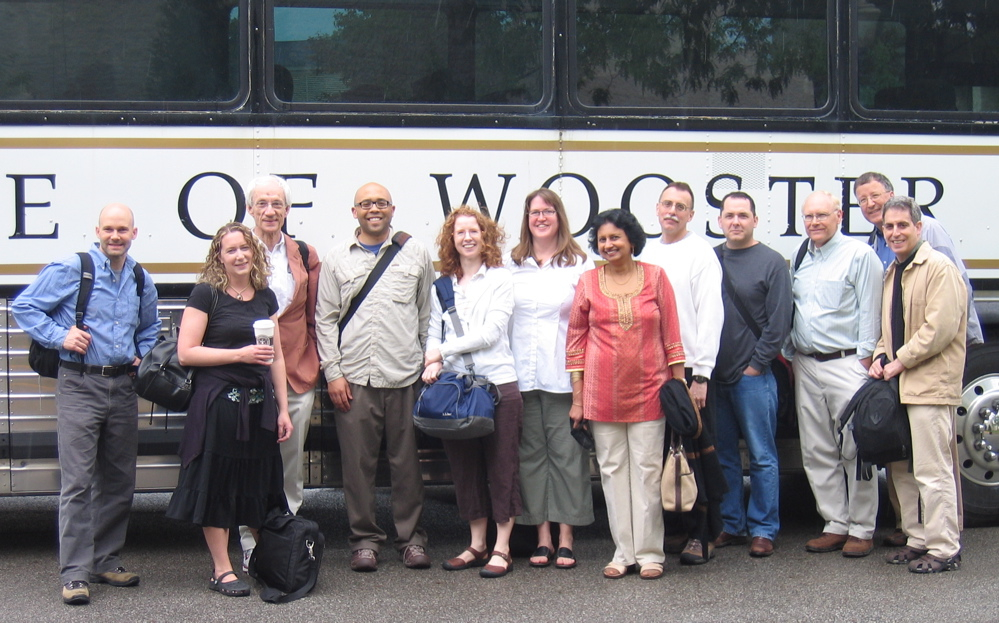Discovery of India – and Positionality
gshaya May 17th, 2008
Trailer for sale or rent / Rooms to rent fifty cents
I’m reminded of one of my undergraduate professors of poetry, Richard Tillinghast, who advised us to only read one book at a time. He said he couldn’t think of Huck and Jim without hearing the tremor of far-off drums and feeling the heat of a tropical sun, the fault of reading Huckleberry Finn and Heart of Darkness at the same time. (Do I have the image right, Professor? It has been a long time.) It’s a funny thing. I’ve been immersed in the sights and sounds of Delhi for a couple days now, but I can’t get the sounds of Tuesday night’s karaoke party out of my head. It looks like Roger Miller will be accompanying me on my discovery of India. (If we are going to take a hard look at our positionality, we are sure to stir up some strange debris.)
It strikes me that there are two fundamental ways to encounter a culture that is new to you. The first is to try to assimilate it to previous experiences and knowledge. So, passing the barbers on the side of the highway in Delhi, I couldn’t help thinking of photographs from early twentieth-century Paris of the street barbers I know from my studies of France. Not so strange, after all, one wants to say… The other tendency is to revel in the different and unfamiliar. So, it wasn’t long before I was gawking at the sidewalk shrines to Hindu gods and goddesses. Something very different is going on here, methinks. Either tendency has its problems. The first can lead to the casual dismissal of difference, to a flat vision of the world; the second can lead to exoticization. For my part, I’d rather aim for something more like open-minded inquiry. Is “discovery” too strong a word for this?
I started writing because I wanted to say a word on the title of our blog. Why Discovery of India? The title comes from Jawaharlal Nehru’s classic account of Indian history, which he wrote during the Second World War and just after while imprisoned by the British. Nehru, leader of the independence movement (with Gandhi), went on to become the first prime minister of India and the driving force behind Indian development. He’s somewhat out of fashion these days. It’s hard to see the shadow of his socialist dreams for India in the bright billboards advertising the latest Bollywood release. But Nehru makes for good reading and good thinking. What he set out in Discovery of India was an inquiry into India’s past and the identity of India. Subtle, open-minded, complex, Discovery has little space for anti-colonial diatribe or nationalist mythmaking. I always read a piece of it with students when we study European decolonization.
This morning we went out to visit the Mehrauli archaeological complex, site of the magnificent Qutab Minar, the enormous stone tower built to celebrate the triumphs of the Muslim Sultans of the twelfth century and following. (Perhaps someone else will say a word more about it our visit?) Among the archaeological marvels, we enjoyed observing the dress and manners of the many Indian tourists visiting there. And they took long looks at us, to be sure. There, under the beautiful dome of the Alai Darwaza, “one of the gems of early Islamic architecture” (say the guidebooks), we began talking with an older gentleman who was there with his children and grandchildren. He asked Lee to take a picture of his family for him. And then he asked where we were from. “America? I have a brother in New York,” he told us. And I have a brother in New York, as well. The Indian man told us he came from Gujarat. I was immediately reminded of Nussbaum’s indelible account of the communal violence in that city in 2002 that starts her book. I couldn’t help wondering whether those events touched this man. Was he Muslim? Or Hindu? Caught up in the violence one way or another? And how else would be place himself, anyway? By caste or language or regional background? Or as a man, a husband, a father, a grandfather? Or as a brother? These are questions to ponder, but not the kinds one can easily ask of a fellow tourist who has asked you to take his picture. Instead, we exchanged a pleasant conversation about the wonders of Qutab Minar. It was his fourth visit here and he always enjoyed it. He was happy to show it to his children. And happy to meet an American. We smiled, shook hands, and set out for further discoveries.

